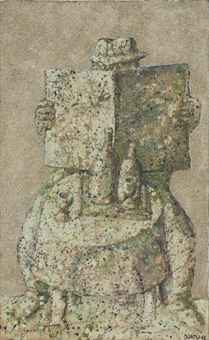
Finished The News: A User’s Manual by Alain de Botton. Although Botton is clearly writing from an English perspective (he lives in London according to the bio in the book), he still has a lot of useful insights and ideas about our relationship to the news and how the news could do its job better.

His basic insight (to sum up unforgivably reductively) is that the news needs more of the techniques used in literature and art.
It isn’t the news per se that is the problem, only the ‘life’-inhibiting version of it that too often abounds. However, if Tolstoy, Flaubert or Sophocles were in the newsroom, the medium might well give us more of what we need in order to keep our souls from ‘dying, for what were WAR AND PEACE, MADAME BOVARY and ANTIGONE in their original state but … news events?”
Alain Botton, The News: A User’s Manual

For example when covering economics, the preponderance of coverage is reporting on changes in stock value. This kind of reporting leaves out most of the story of businesses like the hopes and goals of the people involved, for example.

I notice that having finished this book, I look at news reports a bit differently. For example, I read the report in today’s NYT, “As Britain takes stock of Iraq War, Iraqis grimly Assess its Aftermath” By FALIH HASSAN and TIM ARANGO. Botton’s ideas helped me see the value in the background material in this report. Botton says that in order to understand world events in better perspective, we as readers need to have a better idea of what is normal in other parts of the world. We need to be able to see people not as others but as sharing our own humanity and frailties. I think this report does a good job of that.
The Rise, Fall and Possible Renewal of a Town in Laos on China’s Border – The New York Times
Then there’s this report by Sebastian Strangio. He also doe a good job of fleshing out the picture on the ground in this story. This story interests me because Eileen and I visited Yunnan province mentioned in this story. We were visiting Elizabeth and Jeremy in Kunming. This story talks about a proposed high speed railway between Vientiane, the capital of Laos, and Kunming.

Sometimes when I am reading a report in the NTY, I have little patience for rambling background, especially if I think the writer is trying to do the human interest lead in to get me to read the report.

But now after considering Botton’s ideas, I see more value in this kind of reporting especially if it clothes a story that is pertinent in my view.
Mother, Writer, Monster, Maid | Vela
This article by writer, by Rufi Thorpe, is one of the best descriptions I remember of how necessary it is to be a real person if you are an artist, necessary to your life and your work. I like how she ends, quoting, another writer’s mom who told her, “Do what you want!” This thought is profound when we think carefully about what we actually want in life. Many thanks to Elizabeth for posting this in a link on fecesbooger.
BBC – Culture – How India changed the English language
I love discussions of the interrelations of language and the origin of words.
How to Talk to Fireflies – The New York Times
The author and others talk to fireflies using a little flashing light. Eileen and I looked at the accompanying video. Very cool. I love fireflies.
Consciousness: The Mind Messing With the Mind – The New York Times
Consciousness doesn’t have to emerge. It’s built into matter, perhaps as some kind of quantum mechanical effect. One of the surprising developments in the last decade is how this idea has moved beyond the fringe.